The Throne of Swords(Game of thrones in the original language), the famous American TV series based on the novels of the Chronicles of Ice and Fire by George R. R. Martin, is one of the most talked-about TV shows in history, capable of creating a worldwide following and keeping millions of viewers glued to their screens for eight years (the first season aired in 2011, while the last one, the eighth, ended a few days ago). After the series ended, thousands of discussions were sparked on the web, but of course we don’t want to discuss the ending, the characters or anything else: simply, since the series ended, we thought it would be interesting to recall ten moments from The Throne of Swords that are reminiscent of art history: the authors of the series, David Benioff and D. B. Weiss, drew heavily on medieval imagery to create their characters and scenes. But that’s not all: some scenes suggest strong visual connections with art history, perhaps unintended and unsearched by the screenwriters, but nevertheless capable of calling to the viewers’ eyes paintings, monuments and whatnot. So let’s take a look at ten interesting moments in Game of thrones that have some connection with art history.
1. The Birth of Dragons - St. Margaret of Antioch.
One of the most beautiful and appreciated scenes of the whole series is the birth of dragons by Daenerys Targaryen, the heroine of the series who becomes an antagonist in the last season: in the second season the girl, after her husband’s funeral, wakes up naked from her pyre with three baby dragons. The image of the young dragon queen is reminiscent of many medieval and Renaissance depictions of Margaret of Antioch, the saint who allegedly tamed a dragon simply by praying: in several paintings the dragon appears small, and in some cases on her shoulder, as in the very famous scene in The Throne of Swords.
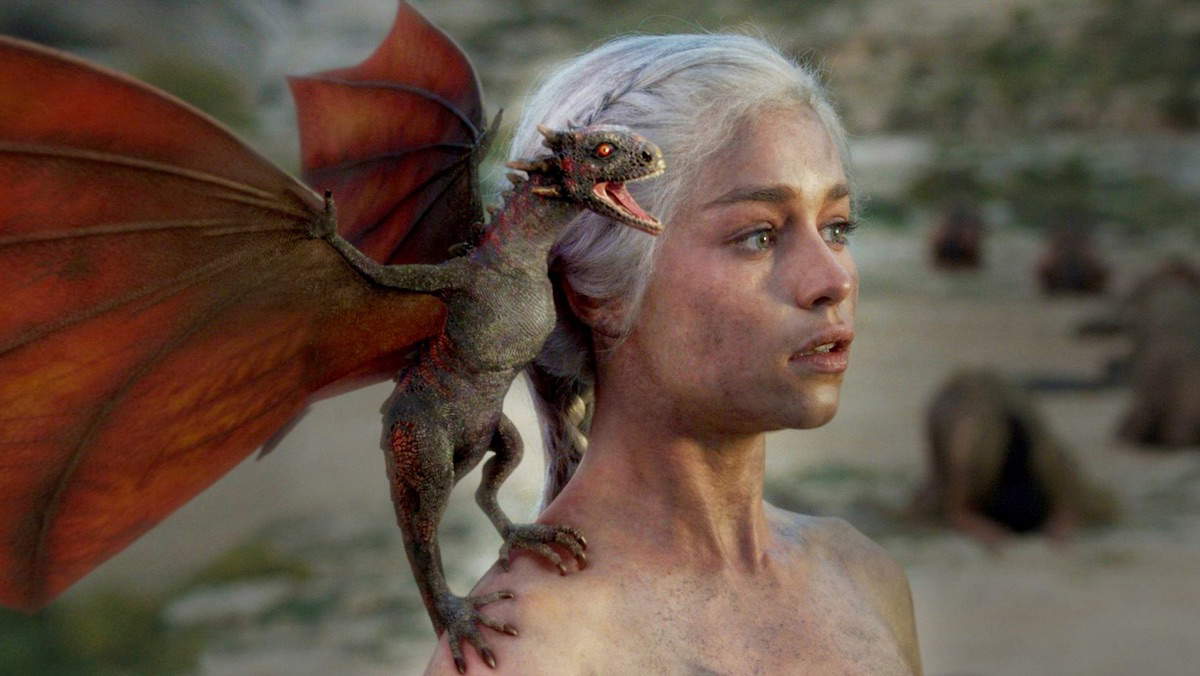 |
| Daenerys’ Birth of Dragons. |
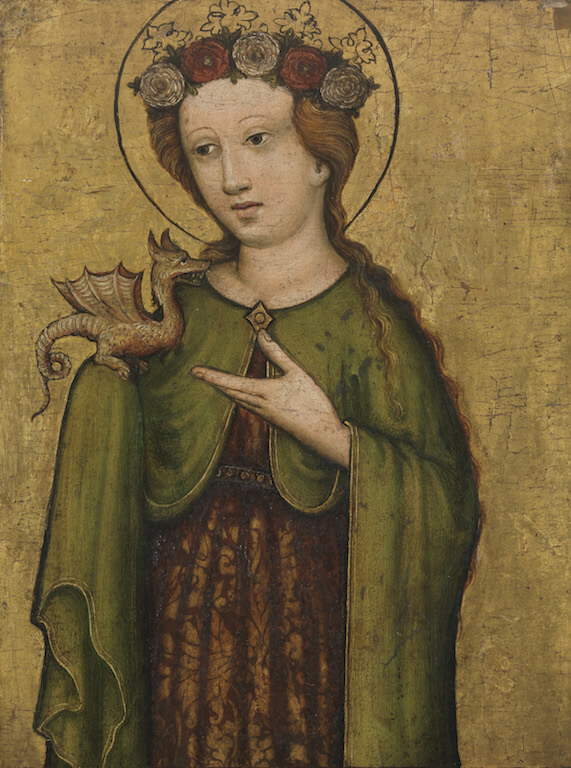 |
| German artist of the 15th century, St. Margaret of Antioch (c. 1450; oil on panel, 41 x 32 cm; Nuremberg, Germanisches Nationalmuseum) |
2. Daenerys’s dragons - medieval bestiaries.
Daenerys’s dragons, in the series, grow up, become her companions, and rise to great prominence in the final season. Their depiction seems to be based on the images of dragons found in many medieval bestiaries: bestiaries were books that collected descriptions of all animals, real or fantastic. It was not uncommon to find it depicted as a large flying reptile, equipped with a crest and wings, capable of breathing fire. In the Christian Middle Ages, the dragon had a negative valence, as a symbol of the devil, while it has positive meanings (as a symbol of valor and fidelity) in Northern European heraldry, where the image of the dragon, used by many warriors, goes back to Celtic origins, or to Greco-Roman mythology (a dragon, named Ladon, was the guardian of the Garden of the Hesperides).
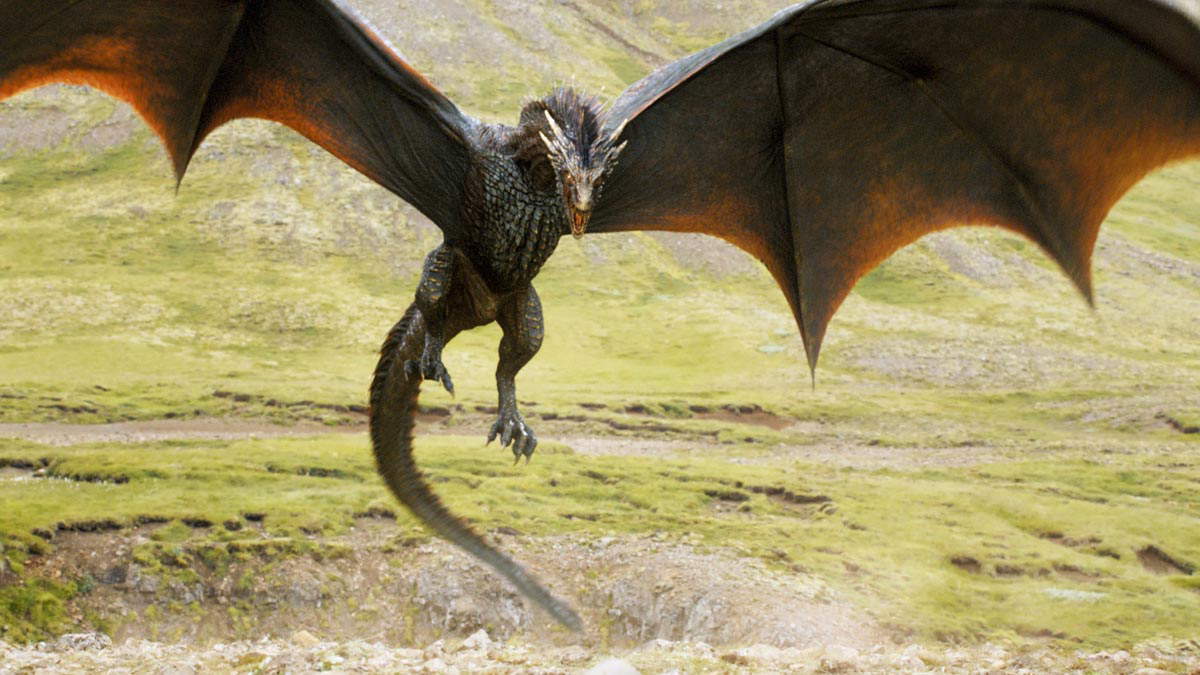 |
| One of Daenerys’s dragons |
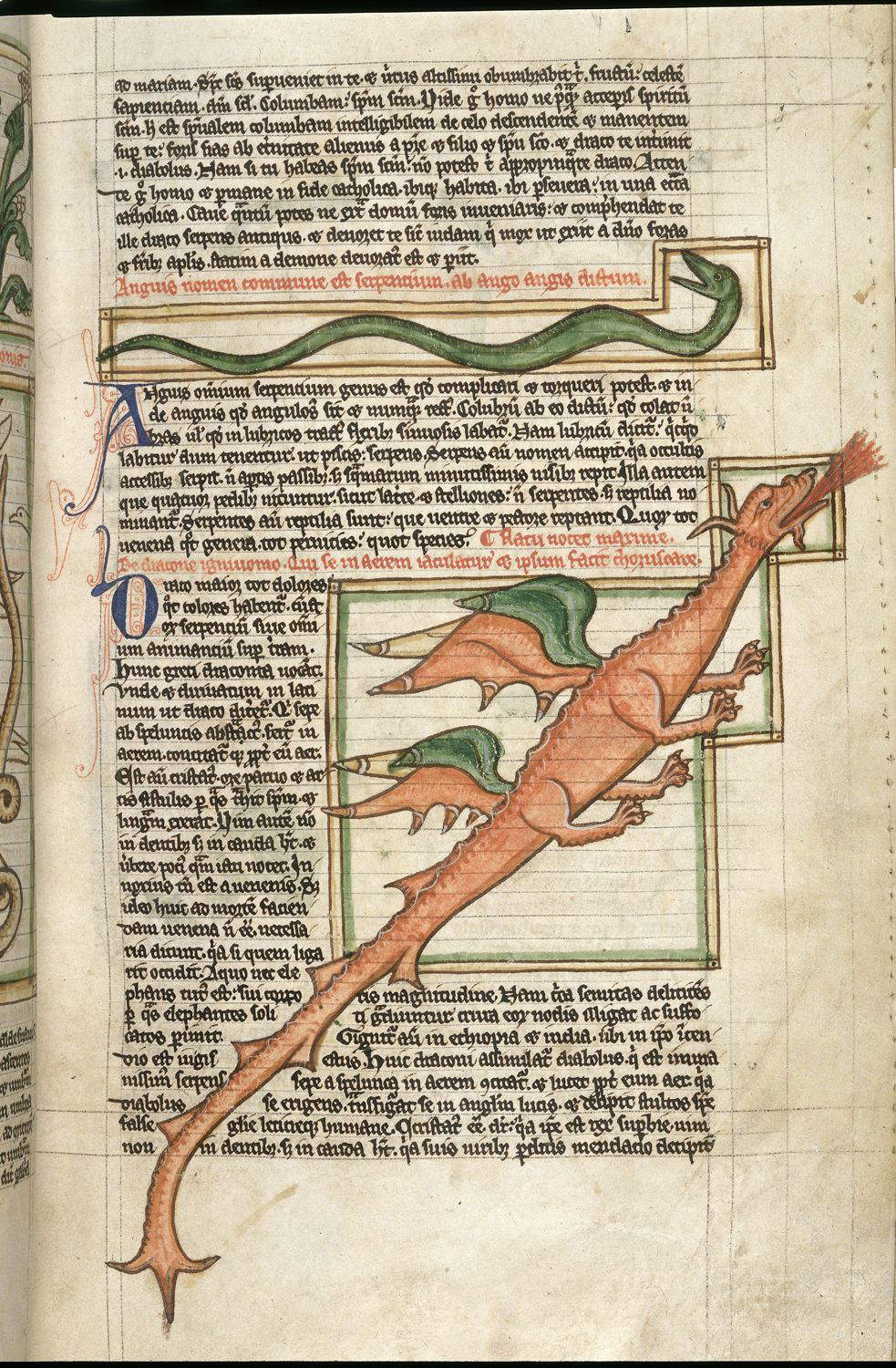 |
| Thirteenth-century miniaturist, Dragon in a medieval bestiary (c. 1255-1265; London, British Library, Harley MS 3244, fol. 59r.) |
3. The Great Temple of Baelor - The Cathedral of Girona.
The Great Temple of Baelor, in The Throne of Swords, is the “church” where the worship of the seven gods is celebrated and is located in the city of King’s Landing, capital of the Seven Kingdoms. The grand staircase leading up to the temple and part of its facade are modeled after the real image of the Cathedral in Girona, Catalonia, where part of the series was filmed. The medieval temple is preceded by a wide Baroque staircase that inspired the writers of the series.
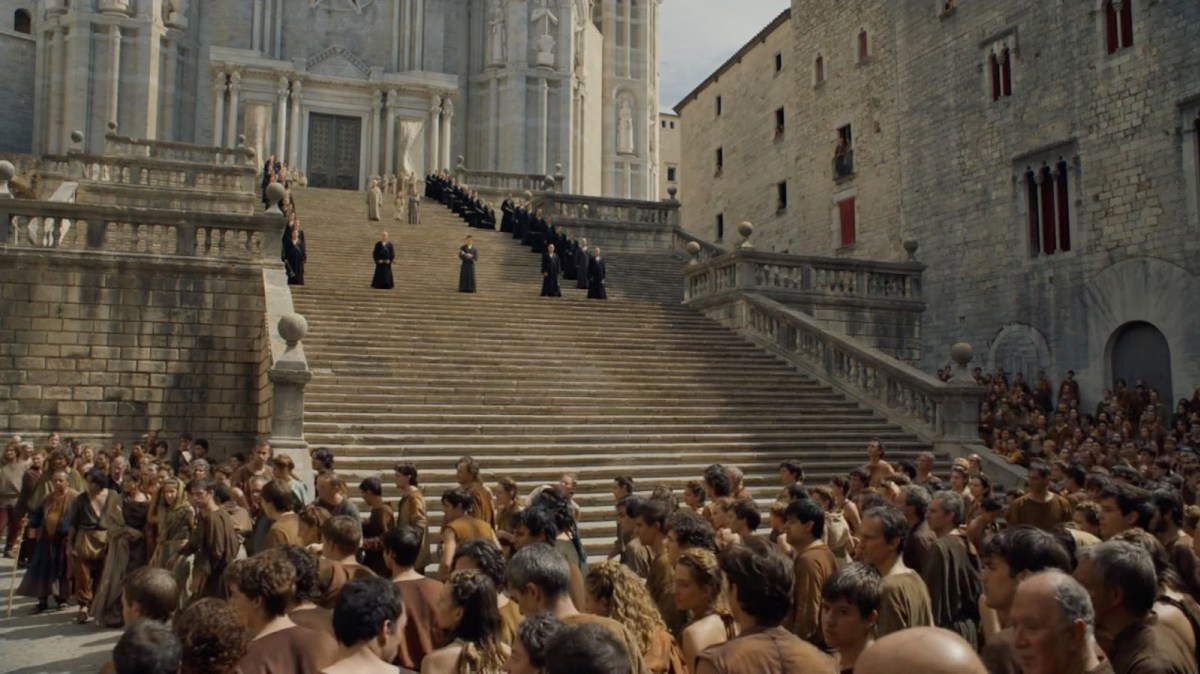 |
| The staircase of the great temple of Baelor |
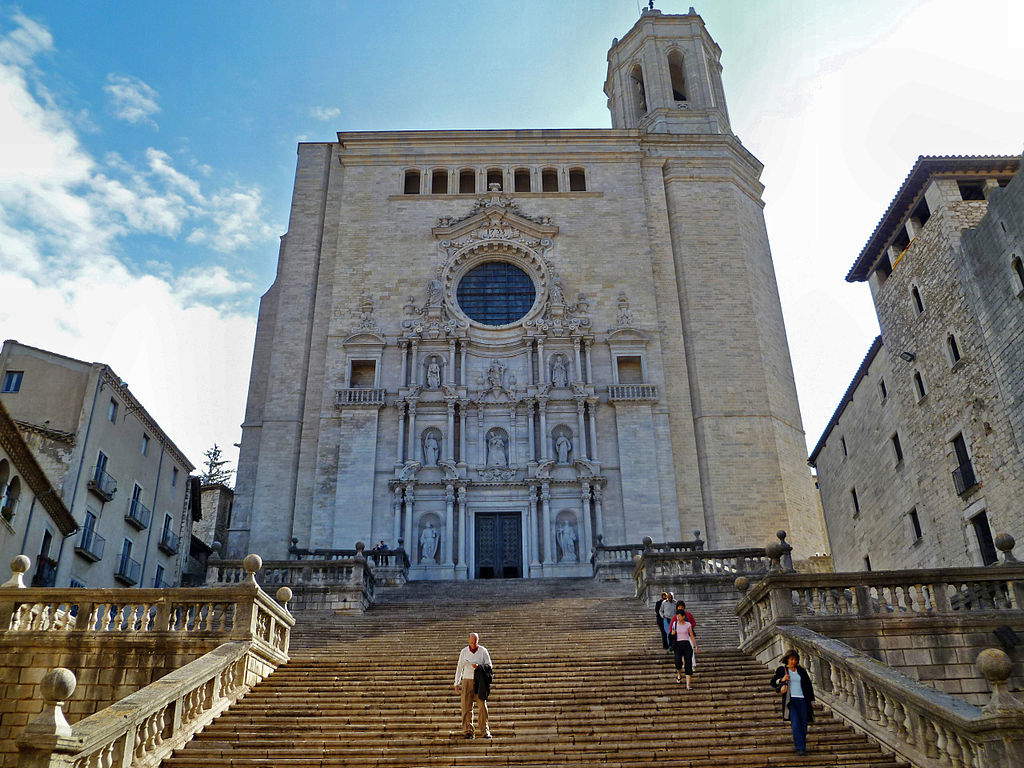 |
| Girona Cathedral. Ph. Credit Georges Jansoone |
4. The Titan of Braavos - The Colossus of Rhodes.
Another famous image in the series is that of the Titan of Braavos, a large statue that forms the entrance to the lagoon where the city of Braavos, the largest of the nine “Free Cities,” is located. One hundred and twenty meters tall, the statue, made of stone and bronze, rests its feet on two islands. The statue, which we see in the second season, is clearly inspired by depictions of the Colossus of Rhodes, the huge statue of the god Helios that in ancient times stood at the entrance to Rhodes harbor (or, according to more recent studies, on the acropolis).
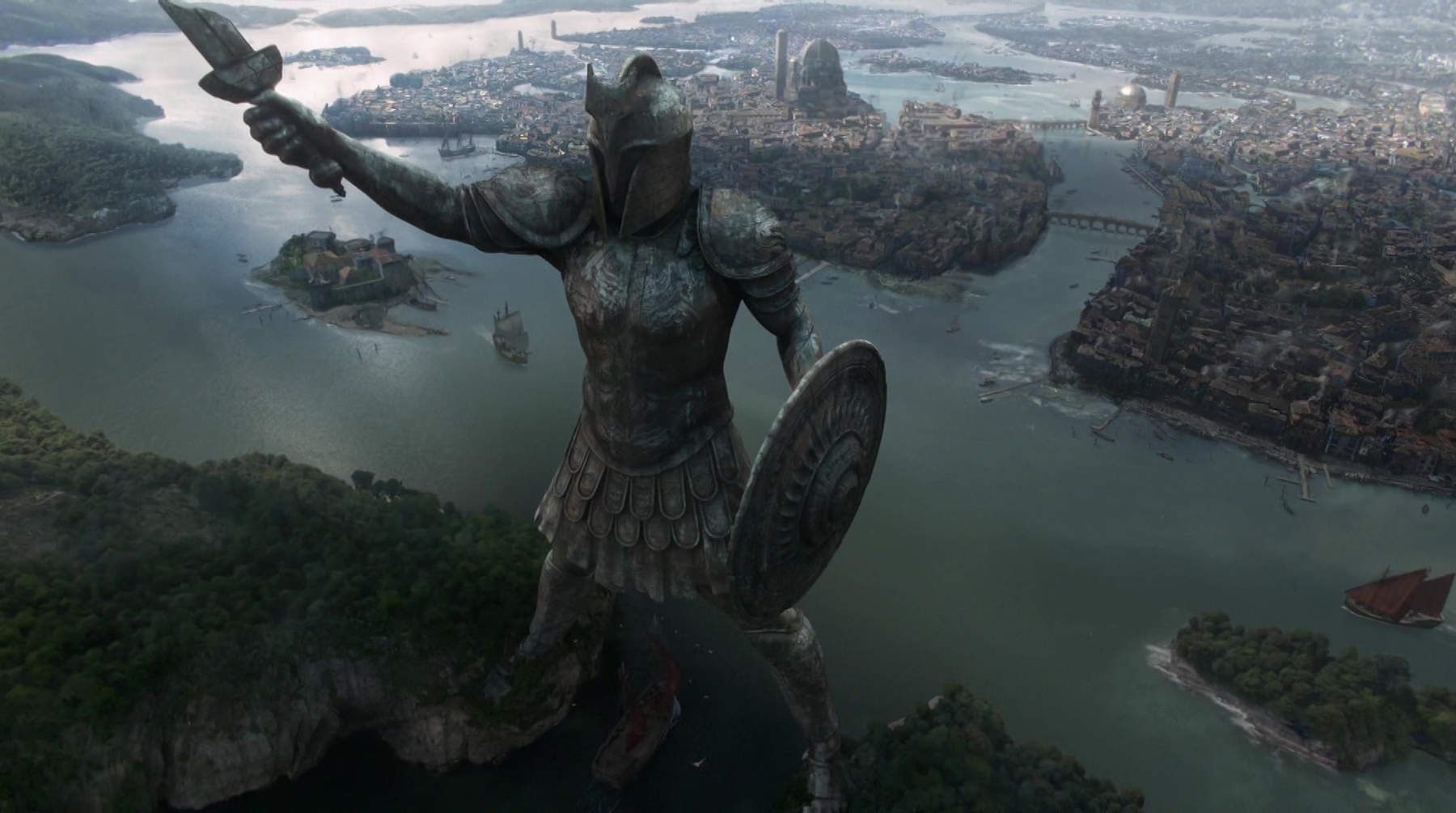 |
| The Titan of Braavos |
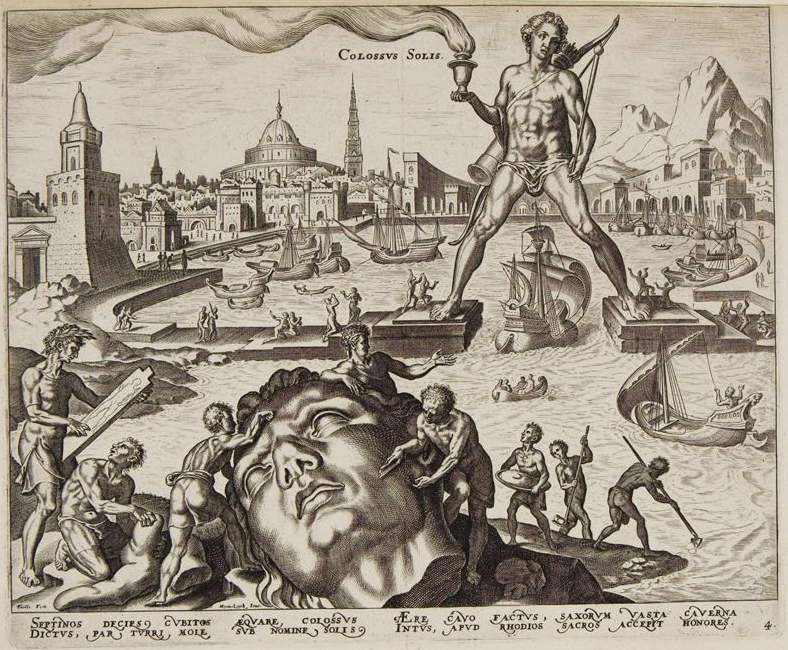 |
| Philipp Galle, from Maarten van Heemskerck, The Colossus of Rhodes, from the Eight Wonders of the World series (1572; engraving, 19.9 x 26.1 cm; Rotterdam, Museum Boijmans van Beuningen) |
5. The torture of Theon Greyjoy - The Crucifixion of Saint Andrew
In the third season of Game of Thrones we witness one of the series’ bloodiest scenes, the torture of Theon Greyjoy by the sadistic Ramsay Snow. The unfortunate man is tied to a decussate cross, i.e., with the arms crossed to form an X: this is the same kind of cross on which, according to tradition, St. Andrew was martyred, and we see it in a great many paintings in the history of art.
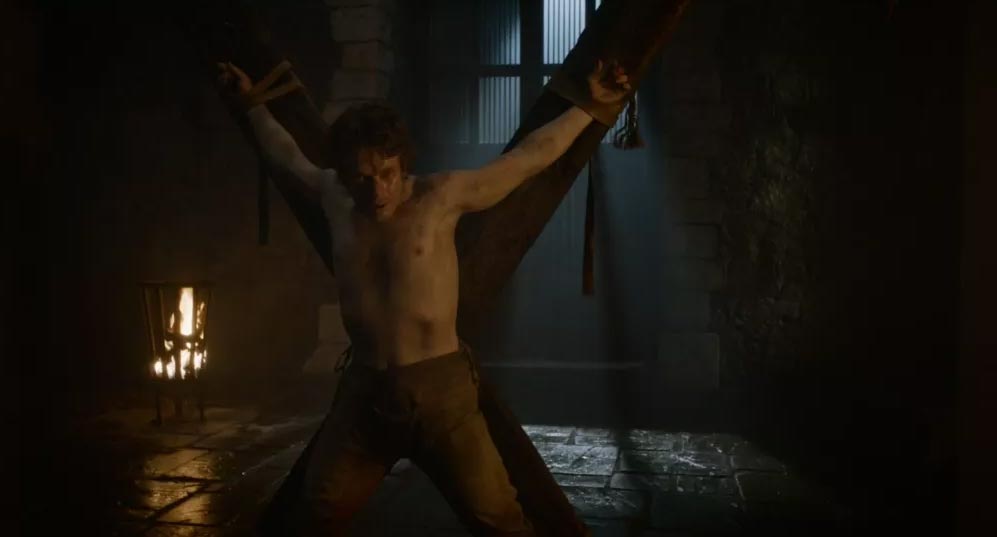 |
| Theon Greyjoy tied to the decussate cross |
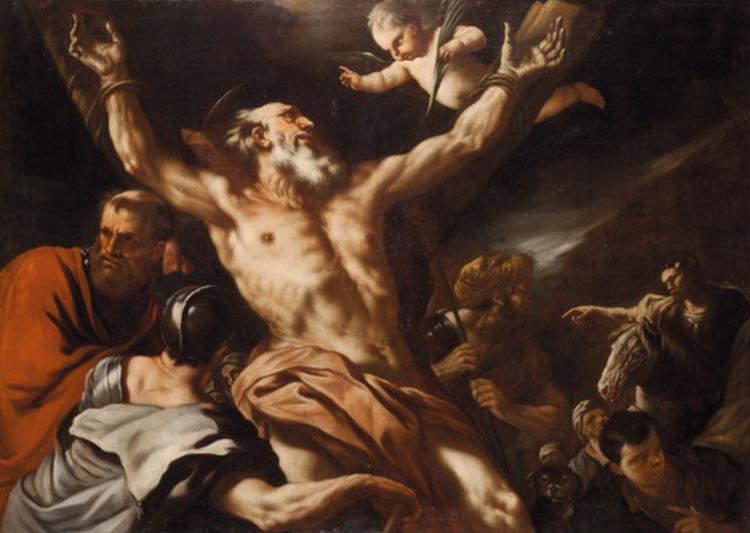 |
| Luca Giordano, Crucifixion of St. Andrew (c. 1660; oil on canvas, 128 x 178.5 cm; Private collection) |
6. The character of Brienne of Tarth - Joan of Arc.
In the series, Brienne of Tarth is a valiant warrior who becomes among the main protagonists of the last season of The Iron Throne. She is one of the most popular characters among fans of the series and her image is based on that of medieval and Renaissance art heroines, starting with Joan of Arc.
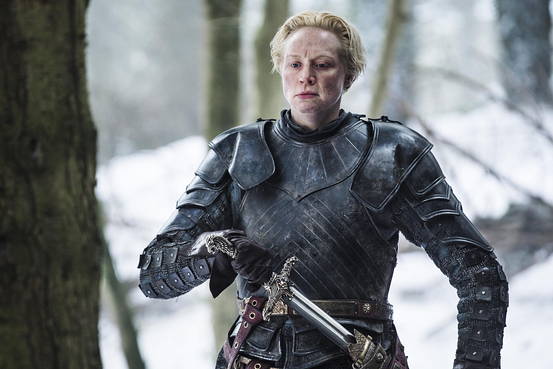 |
| Brienne of Tarth |
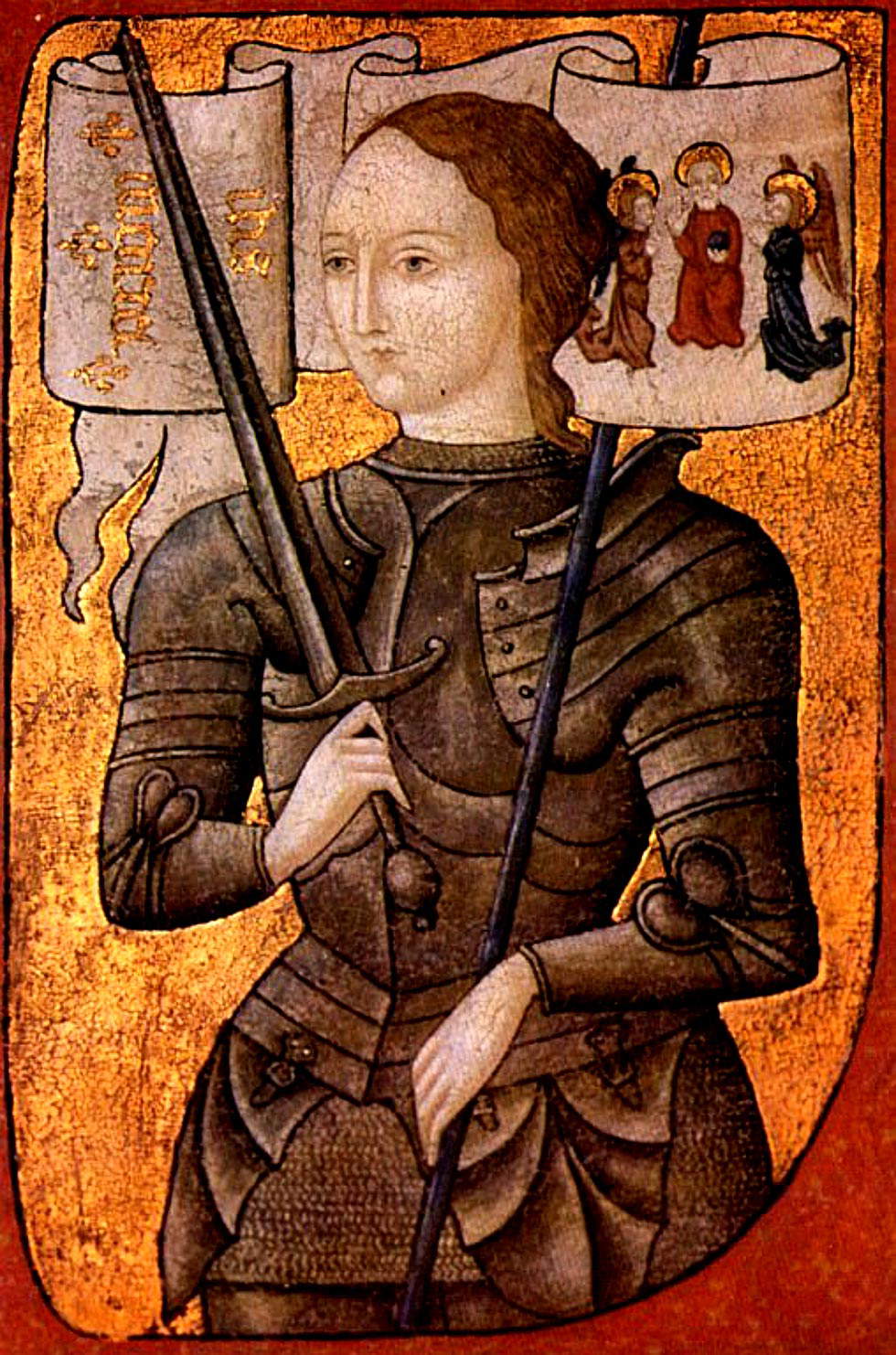 |
| 15th-century French miniaturist, Joan of Arc (c. 1450-1500; oil miniature on parchment; Paris, Archives Nationales) |
7. The Marriage of Joffrey Baratheon and Margaery Tyrell - The Marriage of Nastagio degli Onesti by Sandro Botticelli
Writer Jamie Adair, in her site entirely dedicated to the background of The Throne of Swords, wrote a long article devoted to the similarities between the wedding scene between Joffrey Bartaheon and Margaery Tyrell (one of the highlights of the fourth season) and the famous painting depicting the Marriage of Nastagio degli Onesti by Sandro Botticelli. According to Adair, there are many points of contact between the TV series and the painting: framing, object choices, participants’ outfits.
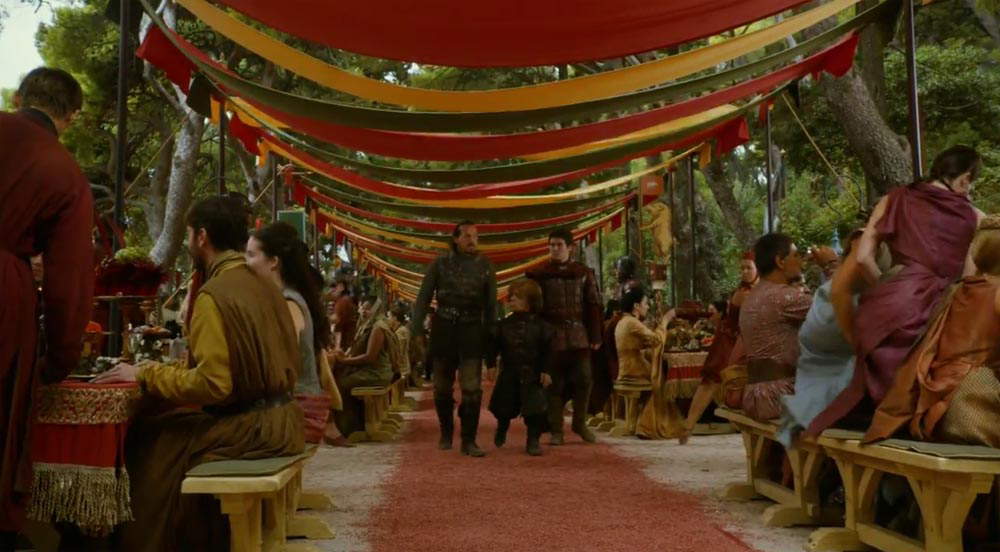 |
| The wedding banquet in the series episode |
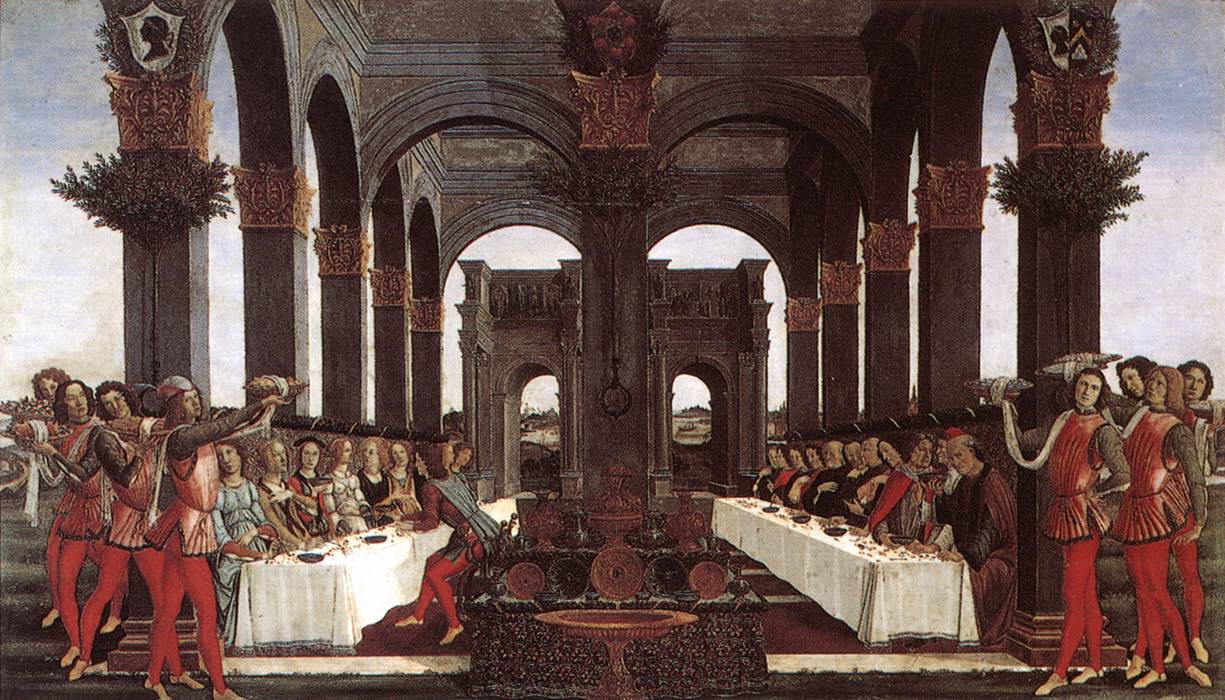 |
| Sandro Botticelli, The Wedding of Nastagio degli Onesti (1483; tempera on panel, 83 x 142 cm; Florence, Pucci Collection) |
8. The Death of Ros - The Martyrdom of Saint Sebastian
Ros, in Game of Thrones, is a prostitute who, in the third season, turns out to be a spy and is therefore handed over to King Joffrey Baratheon, who ties her to the canopy of his chamber and kills her by piercing her with arrows shot from his crossbow. The scene is reminiscent of the martyrdom of St. Sebastian and in particular an iconography particularly popular in the seventeenth century, with the saint bound from a seated position, his hands above his head.
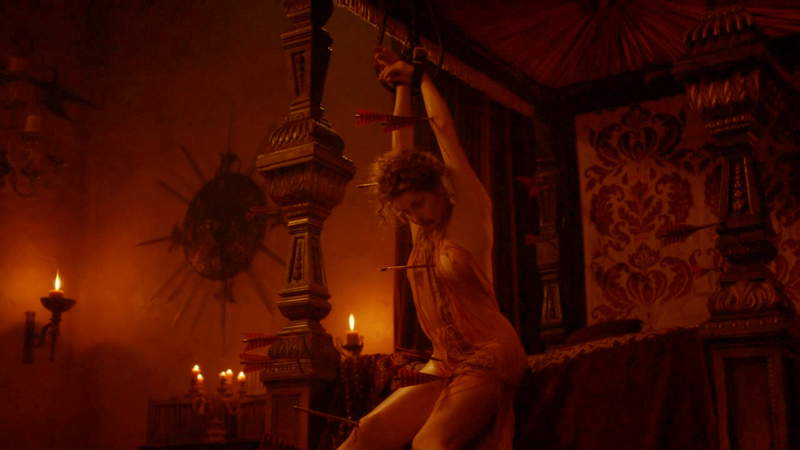 |
| The death of Ros |
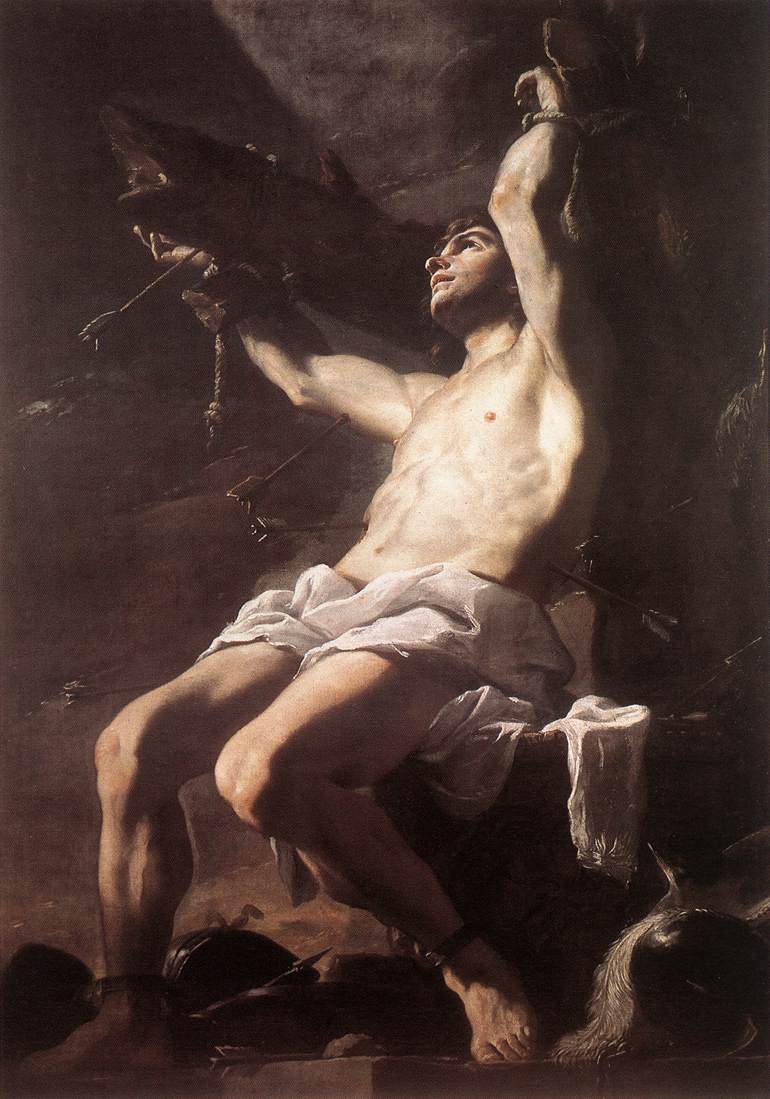 |
| Mattia Preti, Martyrdom of Saint Sebastian (c. 1657; oil on canvas, 240 x 169 cm; Naples, Museo Nazionale di Capodimonte) |
9. Tyrion Lannister - Richard III of England.
Again Jamie Adair has found another interesting point of contact between The Iron Throne and art history in a scene in which one of the series’ main and most beloved protagonists, Tyrion Lannister, appears bringing his hand to his chest while touching his ring, just as King Richard III of England does in a portrait preserved at the National Portrait Gallery in London.
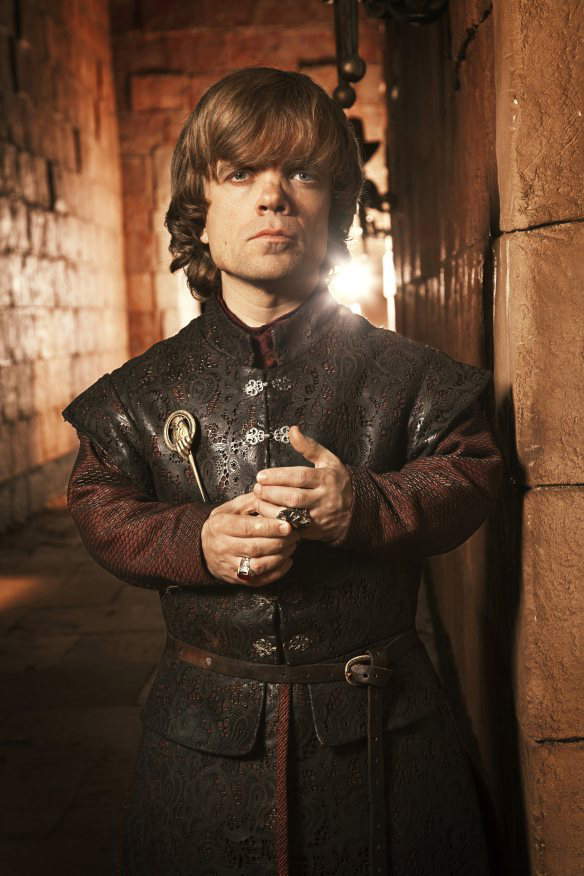 |
| Tyrion Lannister |
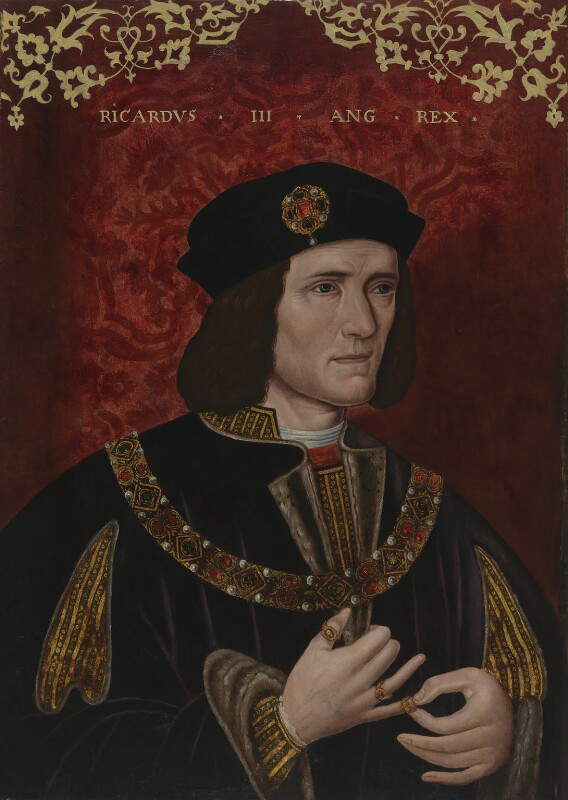 |
| Unknown artist, Portrait of Richard III of England (late 16th century; oil on panel, 63.8 x 47 cm; London, National Portrait Gallery) |
10. The character of Daenerys Targaryen - the medieval or mythological heroines of Victorian England.
Many have noted how the appearance of Daenerys Targaryen’s character is based on that of the medieval or mythological heroines who populate the paintings of Victorian England: beautiful, blond, elegant and consigned to art history by painters such as Rossetti, Waterhouse, Leighton.
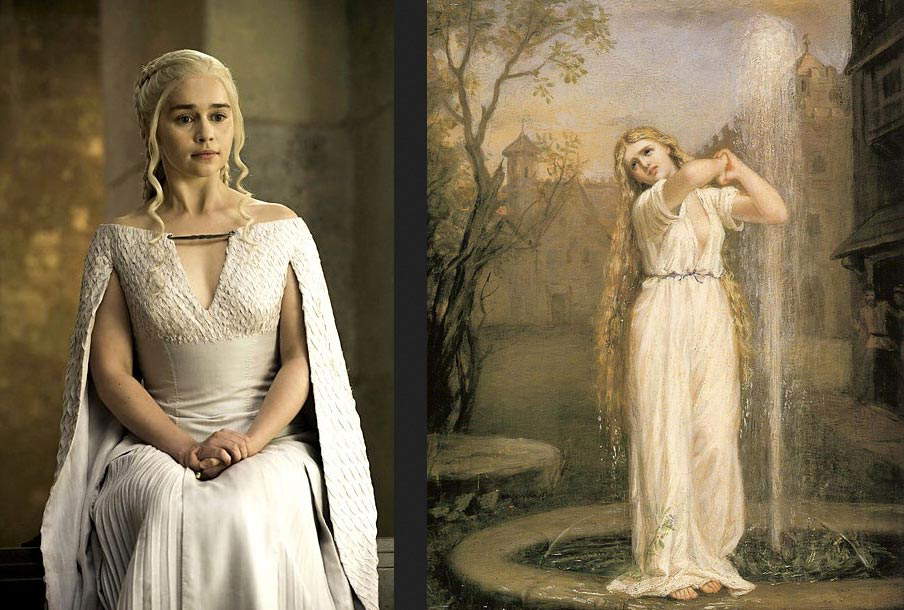 |
| Left: Danaerys Targaryen. Right: John William Waterhouse, Ondina (1872; oil on canvas; Private collection). |
Warning: the translation into English of the original Italian article was created using automatic tools. We undertake to review all articles, but we do not guarantee the total absence of inaccuracies in the translation due to the program. You can find the original by clicking on the ITA button. If you find any mistake,please contact us.